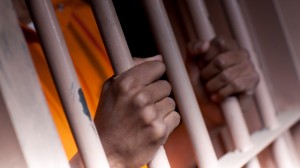This post originally appeared at Colorlines.
Editor’s note: On Friday, the “Smart Sentencing Act,” which the ACLU calls “the most significant piece of criminal justice reform to make it to the Senate floor in several years,” passed the Senate Judiciary Committee with bipartisan support. You can read the ACLU’s press release here.
There’s not much that Tea Party Republicans and liberal Democrats agree on these days. Surprisingly, one of them happens to be scaling back mass incarceration, the subject of a live-streamed meeting today of the Senate Judiciary Committee. The motives vary among and between key legislative leaders as ideologically disparate as Republican Sens. Mike Lee (UT) and Rand Paul (KY) and Democrats Patrick Leahy (VT) and Dick Durbin (IL). But whether motivated by concern for civil liberties, unsustainable state and federal budgets or a New Testament-inclination for giving second chances, one fact trumps all differences: The US houses by far the largest incarcerated population in the world at 2.2 million people as of year-end 2011. That smudge, as well as unsubtle championing of sentencing reform by attorney general Eric Holder, has galvanized a relatively quiet bipartisan effort over the past five years. Advocates say Congress is taking on mass incarceration one reform at a time. The latest are tucked into the 1,582-page FY2014 omnibus spending bill, and other reforms are coming down the pike. Below, a guide to these new developments.
What stands out in the 2014 omnibus spending bill?
Advocates are excited about the creation of the $1 million Charles Colson Task Force, an independent, nine-member panel of experts tasked with issuing recommendations on federal prison reform. A similar idea for a bipartisan commission, at least on Capitol Hill, dates back to 2009. And although the scope of this current incarnation is federal prisons, the bill’s somewhat broad remit suggests that the commission could potentially issue the first comprehensive report since 1965 on criminal justice in America.
“The Bureau of Prisons [now] sucks up 25 percent of the Department of Justice’s budget,” Molly Gill, government affairs counsel at Washington, DC-based Families Against Mandatory Minimums (FAMM), says. “It means more is being spent on prisons and less on prosecution, cops, victim services or rehabilitation — all things that are important for keeping public safety high.”
How will Colson treat nonviolent offenders?
Nonviolent offenders make up more than 90 percent of the roughly 215,000-member federal prison population at an annual cost of $20,000 to $30,000 per inmate. Forty percent are in for drugs and 30 percent for immigration-related offenses. Gill says that the Colson task force will figure out fairer sentences — like not locking people up for a decade because of a period of drug addiction. The feds are taking the lead from states like Georgia and South Carolina, she says, “who were way ahead in looking at sentencing reform and setting up commissions.
Another plus: The task force will have lots of discretion in deciding what aspects of the system they want to focus on, says Jessica Eaglin, counsel at the Brennan Center for Justice at New York University School of Law — which means state prisons may get attention, too.
Will the Colson task force take on race?
“I can’t imagine any objective analysis of incarceration that didn’t take a look at the racial and cultural make-up of who is in prison,” Republican and Justice Fellowship President Craig deRoche, says. Justice Fellowship is the public policy arm of Prison Fellowship, the prison ministry founded 40 years ago by disgraced Nixon aide-turned-evangelical Christian, Charles “Chuck” Colson. (The task force is named for Colson, who championed prison reform until his death in 2012.) The disparities are staggering. According to Yale professors Jason Stanley and Vesla Weaver’s New York Times op-ed this week:
“Just from 1980 to 2006, the black rate of incarceration (jail and prison) increased four times as much as the increase in the white rate. … In 1968, 15 percent of black adult males had been convicted of a felony and 7 percent had been to prison; by 2004, the numbers had risen to 33 percent and 17 percent, respectively.”
Still, based on his time as speaker of Michigan’s House of Representatives, deRoche argues that racism isn’t the only or main reason for racially disparate outcomes. Perverse financial incentives built into the criminal justice system itself may play the largest role of all, he says. One example is Michigan’s indigent defense system, which as of 2013 is being overhauled. A perverse financial incentive rewarded underpaid indigent defense attorneys for their volume of clientele, not their time-consuming trial preparation or competent defense. The racial outcome: guilty rulings for a largely African-American and poor clientele.
What role are conservatives playing?
FAMM worked with the American Legislative Exchange Council (ALEC) to craft legislative language exempting certain offenders from harsh mandatory minimums. That’s ALEC, the conservative group best known for advancing the “Stand your ground” law that helped exonerate George Zimmerman. “So far we haven’t taken a lot of fire and I hope we don’t,” Gill says of FAMM’s bipartisan work with ALEC. “It’s not a bad thing to engage with people from a wide variety of places. That’s what it’s going to take to get anything done and there are people in Congress who know that.”
But don’t conservatives champion mass incarceration?
“Traditionally the right was probably the most fervent advocate of ‘tough on crime’ policies that got us to more than two million people in prison,” says David Dagan, freelance journalist and Ph.D. student at Johns Hopkins University. But now, he writes in a January journal article, undoing mass incarceration is becoming as orthodox on the Right as building it was just a few short years ago. And that, Dagan says, “opens up political space that wasn’t there before.”
What else is in the 2014 spending bill?
Funding increases went to the Second Chance Act, the 2008 law passed under President George W. Bush that supports re-entry and rehabilitation programming for former prisoners as well as drug courts.
Are there any other reforms coming?
The senate judiciary committee meets today to merge three bipartisan bills. Together they currently expand judicial discretion for certain non-violent drug offenses, lower mandatory minimums for the next generation of offenders and incentivize prisoners to tackle addiction. Of particular interest for families of imprisoned men and women is the Smarter Sentencing Act. It takes up retroactive sentence reduction, which the unanimously passed Fair Sentencing Act of 2010 did not address. “More than 9,000 people are still imprisoned simply because of a date,” Gill says of the FSA, which reduced the crack-cocaine sentencing disparity for future but not past offenders. “Getting fair punishment shouldn’t depend on a date that you went to court.”



